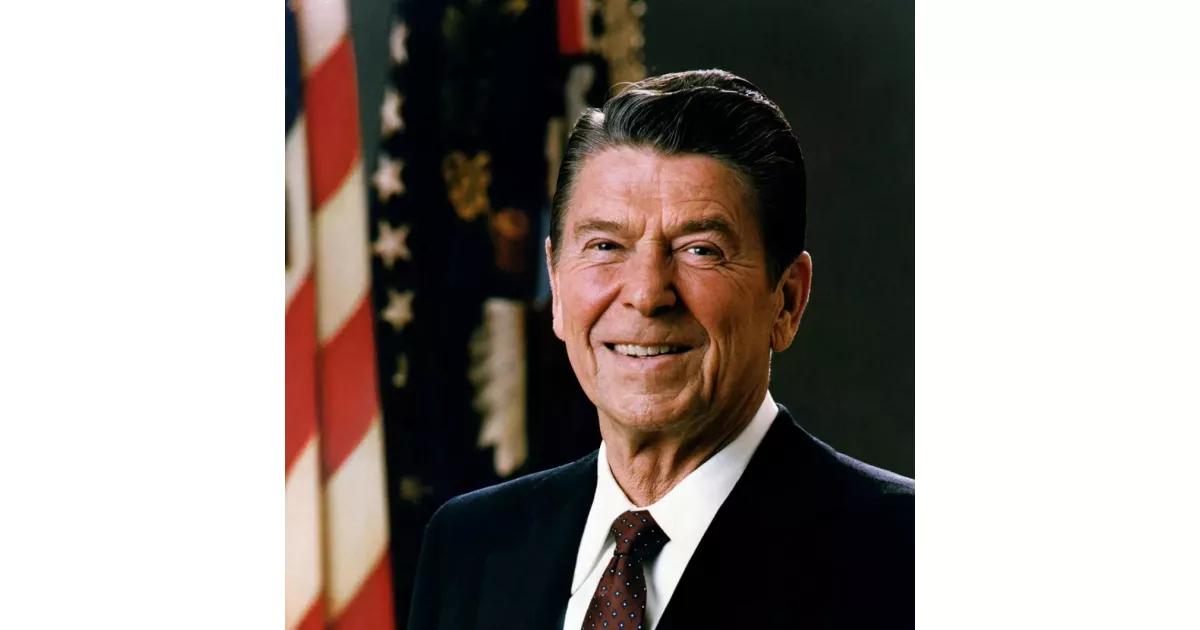Ronald Reagan, the 40th U.S. President (1981-1989), was a pivotal figure in the American conservative movement. A Republican, he implemented supply-side economics, dubbed "Reaganomics," which aimed to reduce government spending and taxes to stimulate economic growth. Reagan strengthened the military, challenged the Soviet Union, and is credited by some with helping to end the Cold War. Domestically, he faced challenges like the AIDS epidemic and the Iran-Contra affair. Before his presidency, he was a Hollywood actor and Governor of California.
February 6, 1911: Ronald Reagan's Birth
On February 6, 1911, Ronald Wilson Reagan was born in Tampico, Illinois. He would later become the 40th president of the United States.
1920: Family Settles in Dixon, Illinois
In 1920, the Reagan family settled in Dixon, Illinois, living near the H. C. Pitney Variety Store Building.
1928: Enrollment in Eureka College
In 1928, Ronald Reagan began attending Eureka College, affiliated with the Disciples of Christ.
1930: Playing for Eureka Red Devils
In 1930, Ronald Reagan played for the Eureka Red Devils football team.
1931: Playing for Eureka Red Devils
In 1931, Ronald Reagan played for the Eureka Red Devils football team.
1932: Graduation from Eureka College
In 1932, Ronald Reagan graduated from Eureka College.
1934: Paraphrasing Roosevelt
In the October 28 debate, Reagan later asked the audience if they were better off than they were four years ago, slightly paraphrasing Roosevelt's words in 1934.
1936: Screen Test with Warner Bros.
In 1936, while traveling with the Chicago Cubs, Ronald Reagan had a screen test that led to a seven-year contract with Warner Bros.
April 1937: Enlistment in the United States Army Reserve
In April 1937, Ronald Reagan enlisted in the United States Army Reserve.
1937: Film Debut in Hollywood
In 1937, Ronald Reagan arrived in Hollywood and debuted in the film "Love Is on the Air" (1937).
1937: Move to California
In 1937, Ronald Reagan relocated to California and began his acting career.
1938: Acting in Brother Rat
In 1938, Ronald Reagan acted in Brother Rat.
January 1940: Marriage to Jane Wyman
In January 1940, Ronald Reagan married Jane Wyman, his co-star in the 1938 film "Brother Rat".
1940: Portrayal of George Gipp in Knute Rockne, All American
In 1940, Ronald Reagan portrayed George Gipp in the film "Knute Rockne, All American", a role that would later give him the nickname "the Gipper".
October 1941: Draft Deferment for Kings Row Filming
In October 1941, Ronald Reagan received a draft deferment to complete filming of "Kings Row".
1941: Rising Stardom
In 1941, Gallup polls placed Ronald Reagan "in the top 100 stars", indicating his rising stardom.
1941: Birth of Maureen Reagan
In 1941, Maureen Reagan, Ronald Reagan's daughter with Jane Wyman, was born.
April 1942: Beginning of Military Service
In April 1942, Ronald Reagan began his military service.
December 9, 1945: Discharge from Military Service
On December 9, 1945, Ronald Reagan was discharged from the United States Army Air Forces as a captain.
1945: Planned anti-nuclear rally
In 1945, Reagan planned to lead an anti-nuclear rally with HICCASP, but Warner Bros. prevented him from participating.
1945: Adoption of Michael Reagan
In 1945, Ronald Reagan and Jane Wyman adopted their son, Michael Reagan.
1946: Appeared in a radio program called Operation Terror
In 1946, Reagan appeared in a radio program called Operation Terror, where he spoke out against rising Ku Klux Klan activity, denouncing it as a "capably organized systematic campaign of fascist violence and intimidation and horror".
March 10, 1947: Election as SAG President
On March 10, 1947, Ronald Reagan was elected as the president of the Screen Actors Guild (SAG) following Robert Montgomery's resignation.
1947: Birth of Christine Reagan
In 1947, Christine Reagan, Ronald Reagan's daughter with Jane Wyman, was born prematurely and died the following day.
1947: First Presidency of Screen Actors Guild
In 1947, Ronald Reagan began his first term as president of the Screen Actors Guild (SAG).
June 1948: Jane Wyman Files for Divorce
In June 1948, Jane Wyman filed for divorce from Ronald Reagan.
1948: Supported Harry S. Truman
In 1948, Reagan supported Harry S. Truman in the presidential election.
1948: Negotiations to secure payments for actors for theatrical films released between 1948-1959 and subsequently televised.
In 1948, negotiations began between the SAG and film producers for the right to receive residual payments.
July 1949: Divorce Finalized
In July 1949, Ronald Reagan's divorce from Jane Wyman was finalized.
1950: Supported Helen Gahagan Douglas
In 1950, Reagan supported Helen Gahagan Douglas for the U.S. Senate.
March 1952: Marriage to Nancy Davis
In March 1952, Ronald Reagan married Nancy Davis.
October 1952: Birth of Patti Reagan
In October 1952, Patti Reagan, Ronald Reagan's daughter with Nancy Davis, was born.
November 10, 1952: Resignation as SAG President
On November 10, 1952, Ronald Reagan resigned as president of the Screen Actors Guild (SAG).
1952: Supported Dwight D. Eisenhower
In 1952, Reagan supported the presidential campaign of Dwight D. Eisenhower, marking a shift to the right in his political views.
1952: End of First SAG Presidency
In 1952, Ronald Reagan's first tenure as president of the Screen Actors Guild ended.
1952: Republicans won a majority of seats in the Senate
On November 4, 1980, Republicans won a majority of seats in the Senate for the first time since 1952 while Democrats retained the House of Representatives.
May 1958: Birth of Ron Reagan
In May 1958, Ron Reagan, Ronald Reagan's son with Nancy Davis, was born.
November 16, 1959: Re-elected as SAG president
On November 16, 1959, Ronald Reagan was elected SAG president for the second time.
1959: Second Presidency of Screen Actors Guild
In 1959, Ronald Reagan began his second term as president of the Screen Actors Guild.
June 7, 1960: Resignation from SAG Presidency
On June 7, 1960, Ronald Reagan resigned from the SAG presidency and left the board.
1960: Supported Richard Nixon
In 1960, Reagan supported the presidential campaign of Richard Nixon, further indicating his shift to the right.
1960: End of Second SAG Presidency
In 1960, Ronald Reagan concluded his second term as president of the Screen Actors Guild.
1961: Criticized Medicare
In 1961, Reagan adapted his speeches into another speech to criticize Medicare, viewing its legislation as a threat to "the end of individual freedom in the United States".
1962: Cancellation of General Electric Theater
In 1962, "General Electric Theater", hosted by Ronald Reagan, was canceled due to declining viewership.
1962: Registered as a Republican
In 1962, after being dropped by General Electric (GE), Reagan formally registered as a Republican, solidifying his move away from the Democratic party.
1964: Gave speech for Barry Goldwater
In 1964, Reagan gave a speech titled "A Time for Choosing" for presidential contender Barry Goldwater, which, although not enough to turn around Goldwater's campaign, significantly increased Reagan's profile among conservatives.
1964: "A Time for Choosing" Speech
In 1964, Ronald Reagan delivered his "A Time for Choosing" speech, which marked the beginning of his rise as a prominent conservative figure.
1965: Hosting Death Valley Days
In 1965, Ronald Reagan became the host of the television program "Death Valley Days".
January 1966: Announced candidacy for California governorship
In January 1966, Reagan announced his candidacy for the California governorship, reiterating his stances on individual freedom and limited government.
1967: Signed the Mulford Act
In 1967, Reagan signed the Mulford Act, which prohibited the public carrying of firearms, and the Therapeutic Abortion Act that allowed abortions in the cases of rape and incest. He later expressed regret over signing the Therapeutic Abortion Act.
1968: Planned a run in the Republican presidential primaries
After Reagan won the 1966 election, he and his advisors planned a run in the 1968 Republican presidential primaries. He ran as an unofficial candidate to cut into Nixon's southern support and be a compromise candidate if there were to be a brokered convention. He won California's delegates, but Nixon secured enough delegates for the nomination.
1968: Legislation was passed to correct loopholes in the Fair Housing Act of 1968
Later in September of 1988, legislation was passed to correct loopholes in the Fair Housing Act of 1968.
February 5, 1969: Declared a state of emergency at Berkeley
On February 5, 1969, Reagan declared a state of emergency at the University of California, Berkeley in response to ongoing protests and violence, sending in the California Highway Patrol.
May 1969: Clash at People's Park
In May 1969, California Highway Patrol officers, along with local officers, clashed with protestors over People's Park. One student was shot and killed. Reagan commanded National Guard troops to occupy Berkeley for seventeen days.
February 1970: Deployed the National Guard
In February 1970, Reagan deployed the National Guard near the University of California, Santa Barbara, due to violent protests.
1970: Reelection campaign
During his victorious reelection campaign in 1970, Reagan promised to prioritize welfare reform, concerned about the growing welfare rolls.
1970: Gubernatorial election
During the 1970 gubernatorial election, Unruh used Reagan's tax policy against him, claiming it favored the wealthy. Reagan countered that he remained committed to reducing property taxes.
1971: Start of welfare experiment
In 1971, Reagan softened his criticism of Nixon's Family Assistance Plan. Nixon then lifted regulations to shepherd California's experiment.
1972: Tax hike concerns
In 1972, Reagan was concerned about the growing welfare rolls would lead to both an unbalanced budget and another big tax hike.
1972: People v. Anderson
In 1972, Reagan's efforts to enforce capital punishment were thwarted by People v. Anderson.
1973: Budget surplus
By 1973, the budget had a surplus, which Reagan preferred "to give back to the people".
1974: Declined to run for governorship
In 1974, Reagan declined to run for the governorship, which was won by Pat Brown's son, Jerry.
1974: End of welfare experiment
In 1974, the Employment Development Department published a report suggesting that the welfare experiment that ran from 1971 to 1974 was unsuccessful.
November 20, 1975: Announced presidential campaign
On November 20, 1975, Reagan announced his presidential campaign, discussing economic and social problems, and to a lesser extent, foreign affairs.
1976: Loss in Republican Primaries
In 1976, Ronald Reagan lost to Gerald Ford in the Republican Party presidential primaries.
1976: Welfare experiment deemed unsuccessful
In 1976, the Employment Development Department published a report suggesting that the welfare experiment that ran from 1971 to 1974 was unsuccessful.
1977: Ford discusses Reagan's primary challenge
In 1977, Ford told Cannon that Reagan's primary challenge contributed to his own narrow loss to Democrat Jimmy Carter in the 1976 presidential election.
1977: Vocal critic of President Carter
In 1977, Reagan emerged as a vocal critic of President Carter.
November 4, 1979: The Iran hostage crisis began
The general election pitted Reagan against Carter amid the multitude of domestic concerns and the ongoing Iran hostage crisis that began on November 4, 1979.
November 13, 1979: Announced presidential campaign
On November 13, 1979, Reagan announced his 1980 presidential campaign with an indictment of the federal government, stressing tax cuts, small government, and a strong national defense.
November 4, 1980: Won presidential election
On November 4, 1980, Reagan won a decisive victory in the Electoral College over Carter, carrying 44 states, also winning the popular vote by a narrower margin.
1980: 1980 Campaign Promise
During his time in office, Reagan never fulfilled his 1980 campaign promise of submitting a balanced budget.
1980: Presidential Campaign
Heading into 1980, Reagan's age became an issue among the press, and the United States was in a severe recession.
1980: High percentage of high schoolers using illegal drugs
In 1980, 53 percent of high school seniors using illegal drugs.
1980: Reagan attempts to appeal to Black voters
In 1980, Ronald Reagan attempted to appeal to Black voters, but would receive the lowest Black vote for a Republican presidential candidate at the time.
1980: Victory in Presidential Election
In 1980, Ronald Reagan won the Republican Party's nomination and the presidential election against Jimmy Carter.
1980: Inflation Rate in 1980
In 1980, the inflation rate was at 12 percent.
January 20, 1981: Inaugurated as President
On January 20, 1981, Reagan was inaugurated as the 40th president of the United States, commenting on the country's economic malaise and stating that "government is not the solution to our problem, government is the problem".
January 28, 1981: Lifted federal oil and gasoline price controls
On January 28, 1981, Reagan lifted federal oil and gasoline price controls as part of his economic policies.
March 30, 1981: Assassination Attempt
On March 30, 1981, Reagan was shot by John Hinckley Jr. outside the Washington Hilton. He underwent surgery and recovered quickly, and the event created a bond between him and the American people.
July 1981: Recession
In July 1981, the economy experienced a recession.
August 1981: PATCO Strike and Firing
In August 1981, the Professional Air Traffic Controllers Organization (PATCO) went on strike. Reagan responded by firing roughly 12,000 striking air traffic controllers who did not return to work after 48 hours.
1981: Appointment of Sandra Day O'Connor
In 1981, Reagan appointed Sandra Day O'Connor as Associate Justice to the Supreme Court, fulfilling a campaign promise to name the first female justice to the Court.
1981: Loosening federal regulation of economic activities
In 1981, Reagan appointed key officials who shared his agenda of loosening federal regulation of economic activities.
1981: Approved plan for Social Security cuts and Omnibus Budget Reconciliation Act of 1981
In 1981, Reagan approved a plan for cuts to Social Security in an effort to keep it solvent. He also signed the Omnibus Budget Reconciliation Act of 1981, cutting funding for federal assistance programs.
1981: Reagan Becomes President
In 1981, Ronald Reagan began his service as the 40th president of the United States.
1981: Start of AIDS Epidemic
In 1981, the AIDS epidemic began to unfold and was initially difficult to understand for physicians and the public.
1981: National debt percentage
In 1981, the national debt as a percentage of the gross domestic product was 33 percent.
1981: Approval ratings decline due to the 1981-1982 recession.
Ronald Reagan's approval ratings declined by the end of his first year due to the 1981-1982 recession.
December 1982: Unemployment Rate Peak
In December 1982, the unemployment rate was measured at 10.8 percent.
1982: Voting Rights Act extended
Despite Reagan having opposed the Voting Rights Act of 1965, the bill was extended for 25 years in 1982.
1982: Boland Amendment passed
In 1982, Congress passed the Boland Amendment, prohibiting the CIA and Department of Defense from using their budgets to aid the Contras in Nicaragua.
1982: Intensified War on Drugs
In 1982, Reagan intensified the war on drugs in response to concerns about the increasing crack epidemic.
1982: Signed the Tax Equity and Fiscal Responsibility Act of 1982
In 1982, Reagan signed the Tax Equity and Fiscal Responsibility Act to address the growing federal debt. The act increased the federal cigarette tax and rescinded parts of the 1981 corporate tax cuts.
1982: Impeding Soviet Access to Hard Currency
In 1982, Reagan tried to cut off the Soviet Union's access to hard currency by impeding its proposed gas line to Western Europe, which hurt the Soviet economy but also caused ill will among American allies.
1982: Address to the British Parliament
In a 1982 address to the British Parliament, Reagan said, "the march of freedom and democracy... will leave Marxism–Leninism on the ash heap of history".
1982: Approval ratings decline due to the 1981-1982 recession.
Ronald Reagan's approval ratings declined in his second and third years, which has been attributed to the 1981–1982 recession.
1982: Garn–St. Germain Depository Institutions Act
The 1982 Garn–St. Germain Depository Institutions Act deregulated savings and loan associations, leading to riskier activities and contributing to the savings and loan crisis.
March 1983: 'Evil Empire' Speech
During a speech to the National Association of Evangelicals in March 1983, Reagan referred to the Soviet Union as "the evil empire".
March 1983: Strategic Defense Initiative (SDI) introduced
In March 1983, Reagan introduced the Strategic Defense Initiative (SDI) to protect the United States from space intercontinental ballistic missiles, which became known as "Star Wars".
October 19, 1983: Overthrow and murder of Maurice Bishop
On October 19, 1983, Maurice Bishop was overthrown and murdered by one of his colleagues, leading to increased instability in Grenada.
1983: Federal tax decrease
By 1983, federal taxes had decreased for most taxpayers, with the largest decreases for higher-income individuals.
1983: Invasion of Grenada
In 1983, President Ronald Reagan ordered the invasion of Grenada.
1983: Signed bill to create Martin Luther King Jr. Day
In 1983, Reagan signed a bill to create Martin Luther King Jr. Day after it passed both houses of Congress with veto-proof margins, despite his initial opposition.
1983: Signed amendments to raise Social Security taxes and retirement age
In 1983, Reagan signed amendments to raise both the program's payroll taxes and the retirement age for benefits in order to keep Social Security financially secure, following the recommendations of the Greenspan Commission.
1983: Carter's debate briefing book obtained
In 1983, Reagan's campaign managers were revealed to having obtained Carter's debate briefing book before the debates.
1983: End of Recession
In 1983, the recession ended.
January 29, 1984: Reagan announces reelection campaign
On January 29, 1984, Reagan announced his reelection campaign with the slogan "America is back and standing tall".
1984: Federal spending on AIDS
Between the fiscal years of 1984 and 1989, federal spending on AIDS totaled $5.6 billion.
1984: Reagan's approval rating nears 60%
By mid-1984, Ronald Reagan's approval rating neared 60 percent after his ratings rebounded following the invasion of Grenada.
1984: Signed legislation to impose fines for fair housing discrimination offenses
In 1984, Reagan signed legislation intended to impose fines for fair housing discrimination offenses.
1984: Re-election as President
In 1984, Ronald Reagan won a landslide victory in the presidential election, defeating Walter Mondale.
September 1985: Reagan calls AIDS research a "top priority"
In a September 1985 press conference, following Rock Hudson's AIDS diagnosis announcement, Reagan called a government AIDS research program a "top priority", while also citing budgetary constraints.
September 18, 1985: Reagan does not mention AIDS in public
Between September 18, 1985, and February 4, 1986, Reagan did not mention AIDS in public.
October 1985: Death of Rock Hudson affects Reagan's view on AIDS
In October 1985, the death of President Reagan's friend Rock Hudson, due to complications from AIDS, prompted Reagan to seek more information about the disease.
1985: Crack became widespread
After crack became widespread in 1985, Reagan's administration publicized the campaign to gain support for the war on drugs.
1985: Defense spending doubled
Between 1981 and 1985, defense spending doubled.
1985: First Summit Conference between Reagan and Gorbachev
In 1985, Ronald Reagan and Mikhail Gorbachev held their first summit conference, marking the beginning of a shift towards diplomacy and arms agreements.
1985: Inflation indexing started
In 1985, the indexing for inflation of exemptions and brackets became a requirement as part of the Economic Recovery Tax Act of 1981.
1985: Fall in oil prices impacts Soviet economy
In 1985, the prices of oil, the primary source of Soviet export revenues, fell to one third of the previous level, contributing to a stagnant economy during Mikhail Gorbachev's leadership.
1985: State of the Union Address: Support for freedom fighters
In his 1985 State of the Union Address, Reagan proclaimed support for freedom fighters as self-defense, solidifying the Reagan Doctrine of supporting anti-communist movements against Soviet-backed groups worldwide.
1985: Imposition of new sanctions on South Africa
In late 1985, Reagan announced the imposition of new sanctions on the South African government, including an arms embargo, but these were viewed as weak by anti-apartheid activists.
February 4, 1986: Reagan does not mention AIDS in public
Between September 18, 1985, and February 4, 1986, Reagan did not mention AIDS in public.
April 5, 1986: West Berlin discotheque bombing
On April 5, 1986, the West Berlin discotheque bombing, which killed an American soldier and injured others, revived contentious relations between Libya and the United States under President Reagan.
November 1986: Iran-Contra Affair exposed
In early November 1986, the Iran-Contra transactions were exposed by Ash-Shiraa, leading to initial denials from Reagan, followed by announcements of resignations and investigations.
1986: Federal regulation elimination
By 1986, the Reagan administration had eliminated almost half of the federal regulations that had existed in 1981, reflecting Reagan's agenda to loosen federal regulation of economic activities.
1986: Congress approves Comprehensive Anti-Apartheid Act
In 1986, Congress approved the Comprehensive Anti-Apartheid Act, which included tougher sanctions, overriding Reagan's veto.
1986: Appointments of Antonin Scalia and William Rehnquist
In 1986, Reagan appointed Antonin Scalia as Associate Justice and elevated William Rehnquist from Associate Justice to Chief Justice of the Supreme Court.
1986: Reagan requests report on AIDS
In 1986, Reagan tasked C. Everett Koop with developing a report on AIDS, leading to recommendations for sex education and condom usage, which angered some conservatives.
1986: Reykjavík Summit
In 1986, during the Reykjavík Summit, Reagan and Gorbachev agreed to abolish all nuclear weapons, but the deal fell through due to disagreements over SDI research.
1986: The Tax Reform Act of 1986
In 1986, the Tax Reform Act reduced the number of tax brackets and the top tax rate while also nearly doubling personal exemptions.
1986: Anti-Drug Abuse Act of 1986 signed
Reagan signed the Anti-Drug Abuse Act of 1986, which specified penalties for drug offenses.
February 1987: Release of the Tower Commission report
In February 1987, the Tower Commission released its report confirming the administration had traded arms for hostages and sent the proceeds to the Contras, damaging Reagan's credibility and raising questions about his competency.
May 17, 1987: Iraqi jet hits USS Stark
On May 17, 1987, during the Tanker War, an Iraqi fighter jet hit the USS Stark with two Exocet missiles, killing 37 sailors.
June 1987: Reagan's Berlin Wall Speech
In June 1987, Ronald Reagan addressed Mikhail Gorbachev during a speech at the Berlin Wall, demanding that he "tear down this wall."
1987: Robert Bork Nomination
In 1987, Reagan unsuccessfully nominated Robert Bork to the Supreme Court as a way to achieve his civil rights policy.
1987: Veto of Civil Rights Restoration Act
In 1987, Reagan vetoed the Civil Rights Restoration Act.
1987: Approval Ratings Recover
In mid-1987, Ronald Reagan's approval ratings began to recover after declining during the Iran–Contra scandal.
March 1988: Veto of Civil Rights Restoration Act of 1987
In March 1988, Reagan vetoed the Civil Rights Restoration Act of 1987, arguing that it unreasonably increased the federal government's power and undermined the rights of churches and business owners, but Congress overrode his veto.
May 1988: U.S. Senate ratifies the Intermediate-Range Nuclear Forces Treaty
In May 1988, the U.S. Senate overwhelmingly voted in favor of ratifying the Intermediate-Range Nuclear Forces Treaty, giving Reagan's popularity a major boost.
1988: Fourth Summit Conference between Reagan and Gorbachev
By 1988, Reagan and Gorbachev had held four summit conferences between 1985 and 1988, indicating a period of increased diplomatic engagement.
1988: Appointment of Anthony Kennedy
In 1988, Reagan appointed Anthony Kennedy as Associate Justice to the Supreme Court.
1988: Signed the Anti-Drug Abuse Act of 1988 and Study on illegal drug use
In 1988, Reagan signed the Anti-Drug Abuse Act of 1988 to specify penalties for drug offenses and a study showed 39 percent of high school seniors using illegal drugs compared to 53 percent in 1980.
1988: Republican presidential candidates invoke Reagan's policies
Since 1988, Republican presidential candidates have invoked Ronald Reagan's policies and beliefs.
January 20, 1989: Reagan Leaves Office
On January 20, 1989, Ronald Reagan left the presidency at the age of 77, making him the oldest president to leave office at the end of his tenure at the time.
November 1989: Fall of the Berlin Wall
In November 1989, the Berlin Wall fell, which was retroactively recast as a soaring achievement following Reagan's demand to Gorbachev to tear it down in 1987.
1989: Federal spending on AIDS
Between the fiscal years of 1984 and 1989, federal spending on AIDS totaled $5.6 billion.
1989: BLS Measures Unemployment
By 1989, the BLS measured unemployment at 5.3 percent, while both economic inequality and homelessness increased during the 1980s.
1989: National Debt Percentage of GDP
By 1989, the national debt as a percentage of the gross domestic product rose to 53 percent.
1989: Reagan Leaves Office
In 1989, Ronald Reagan concluded his tenure as the 40th president of the United States.
1989: Reagan speaks out about gun control
In 1989, Ronald Reagan made his first public appearance after leaving office and shortly after the Stockton schoolyard shooting, he stated his views on gun control.
1989: Reagan supports repealing presidential term limits
In 1989, Ronald Reagan supported repealing the Twenty-second Amendment's presidential term limits.
1990: Gallup survey on Reagan's presidency
In 1990, a year after he left office, a Gallup survey found that 54 percent of Americans said they approved of the overall job Reagan did as president.
1990: End of Economic Expansion
In 1990, the economic expansion that began in 1982 came to an end.
1990: Budget Enforcement Act of 1990
Jeffrey Frankel opined that the deficits were a major reason why Reagan's successor, Bush, reneged on his campaign promise by raising taxes through the Budget Enforcement Act of 1990.
March 1991: Reagan writes "Why I'm for the Brady Bill"
In March 1991, Ronald Reagan wrote an op-ed in the New York Times, titled "Why I'm for the Brady Bill".
1991: Ronald Reagan Presidential Library Opens
In 1991, the Ronald Reagan Presidential Library opened.
1991: Dissolution of the Soviet Union
In 1991, the Soviet Union was dissolved. This marked the end of the Cold War.
1992: Approval of Reagan administration declines
In 1992 the number of Americans who approved of the Reagan administration declined to 48 percent.
1992: Reagan addresses the Republican National Convention
In 1992, Ronald Reagan addressed the Republican National Convention and favored a constitutional amendment requiring a balanced budget.
1992: Possible onset of Alzheimer's symptoms
Medical experts say that Ronald Reagan first began exhibiting overt symptoms of Alzheimer's illness in late 1992.
1993: Possible onset of Alzheimer's symptoms
Medical experts say that Ronald Reagan first began exhibiting overt symptoms of Alzheimer's illness in 1993.
February 3, 1994: Reagan's Final Public Speech
On February 3, 1994, Ronald Reagan gave his final public speech during a tribute to him in Washington, D.C.
April 27, 1994: Reagan attends Richard Nixon's funeral
On April 27, 1994, Ronald Reagan's last major public appearance was at the funeral of Richard Nixon.
May 1994: Reagan, Ford, and Carter support the Federal Assault Weapons Ban
In May 1994, Ronald Reagan, Gerald Ford, and Jimmy Carter sent a letter to House members, urging them to support the controversial Federal Assault Weapons Ban.
August 1994: Reagan diagnosed with Alzheimer's disease
In August 1994, Ronald Reagan was diagnosed with Alzheimer's disease, which he announced in November through a handwritten letter.
1994: Diagnosis with Alzheimer's Disease
In 1994, Ronald Reagan was diagnosed with Alzheimer's disease, which impacted his post-presidency.
1997: Reagan recognizes few people
By 1997, it was reported that Ronald Reagan recognized few people other than his wife, due to Alzheimer's disease.
2003: Reagan loses ability to speak and is mostly confined to his bed
By the end of 2003, Ronald Reagan had lost his ability to speak and was mostly confined to his bed, no longer able to recognize family members due to Alzheimer's.
June 5, 2004: Ronald Reagan's Death
On June 5, 2004, Ronald Reagan died. He was an American politician and actor who served as the 40th president of the United States from 1981 to 1989.
2006: Favorability of Reagan's presidency reaches 71% approval
In 2006, favorability of Ronald Reagan's presidency reached its highest ever: 71 percent approval.
2008: Scholarly consensus on Reagan's legacy
In 2008, British historian M. J. Heale summarized that scholars had reached a broad consensus on Reagan's legacy.
2010: Favorability of Reagan's presidency reaches 74% approval
In 2010, favorability of Ronald Reagan's presidency reached 74 percent approval.
2018: Favorability of Reagan's presidency reaches 72% approval
In 2018, favorability of Ronald Reagan's presidency reached 72 percent approval.
2023: Favorability of Reagan's presidency reaches 69% approval
In 2023, favorability of Ronald Reagan's presidency reached 69 percent approval.
Mentioned in this timeline
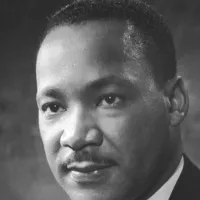
Martin Luther King Jr was a pivotal leader in the...
California is a U S state on the Pacific Coast...

The stock market serves as a platform where buyers and...
The Union of Soviet Socialist Republics USSR existed from to...
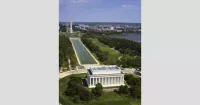
Washington D C is the capital city and federal district...
Africa is the second-largest and second-most populous continent comprising of...
Trending

27 days ago Jaxson Dart Returns for Giants Against Patriots After Turbulent, Injury-Filled Season
3 months ago Maple Leafs-Red Wings Game Time Changed to Avoid Conflict with Blue Jays

2 months ago Donovan Clingan impresses in Preseason; Predicted to achieve Double-Double average this season.

3 months ago Gerard Butler's 'Law Abiding Citizen' resurgence: A streaming comeback 15 years later.

9 months ago Yankees seek series win after Fried's victory over Pirates, continuing homer barrage.

2 months ago Joey Bosa Lists Los Angeles Mansion for $3.7 Million Amid Bills Transition.
Popular

XXXTentacion born Jahseh Dwayne Ricardo Onfroy was a controversial yet...
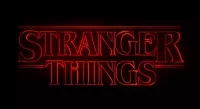
Stranger Things created by the Duffer Brothers is a popular...
The Kennedy Center Honors are annual awards recognizing individuals and...
Turning Point USA TPUSA is an American nonprofit organization founded...

Candace Owens is an American conservative political commentator and author...
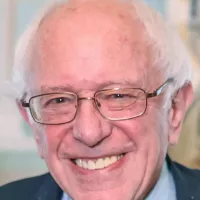
Bernie Sanders is a prominent American politician currently serving as...
